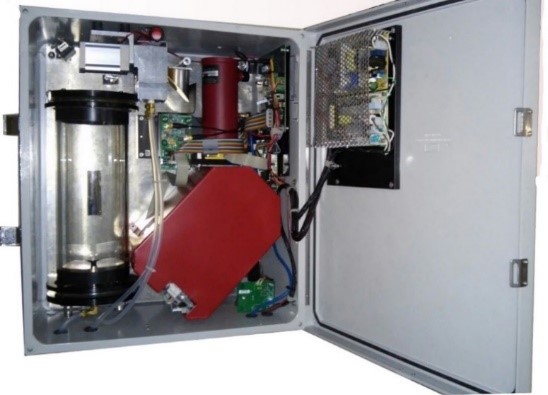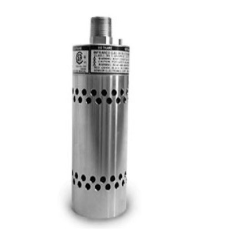Alkane
What is it?
Alkanes are the organic chemicals that are building blocks of gasoline. They are made up of carbon and hydrogen atoms. Our alkane measurements do not include methane.
Where does it come from at a refinery?
Alkanes are found all over refineries as they make up about half the chemicals found in gasoline.
Where else can you find it?
Alkanes are present in the air we breathe. Other alkanes are in natural gas and around oil wells.
Why do we measure it?
Alkanes are being measured due to the presence of alkanes at refineries.
How might it affect my health?
In general, alkanes have minimal effects on your health.
The California EPA's Office of Environmental Health Hazard Assessment (OEHHA) has information on alkane, including n-hexane.
Benzene - C6H6
What is it?
Benzene is a colorless, highly flammable liquid with a sweet gasoline-type odor.
Where does it come from at a refinery?
Benzene is emitted from crude oil processing, storage, and the combustion of natural gas.
Where else can you find it?
Benzene in the atmosphere is primarily from car emissions and gasoline vapors. It is also widely used to make other chemicals and manufacture items such as rubbers, dyes, detergents, drugs, and pesticides. Cigarette smoke is responsible for most of the benzene found in indoor environments and is a significant source of exposure to not only smokers but also to those exposed to secondhand smoke. Natural sources of benzene include volcanoes and forest fires.
Why do we measure it?
Benzene is a cancer-causing chemical. While the bulk of benzene in the air comes from vehicle exhaust, benzene emissions are also associated with various processes at industrial sources.
How might it affect my health?
Short-term inhalation of high levels of benzene can cause dizziness, lightheadedness, and headaches as well as lung irritation. The long-term effects of benzene exposure are related to anemia and effects on the bone marrow. Benzene is classified as a cancer-causing chemical in humans based on workers with long-term occupational exposure as well as on animal studies.
The California EPA's Office of Environmental Health Hazard Assessment (OEHHA) has information on benzene. In addition, the CDC has “ToxFAQs” fact sheets for benzene.
Ethylbenzene - C6H5CH2CH3
What is it?
Ethylbenzene is a colorless liquid that smells like gasoline. It evaporates at room temperature and burns easily.
Where does it come from at a refinery?
Ethylbenzene emissions are associated with the transfer, storage, and processing of crude oil and the combustion of natural gas.
Where else can you find it?
Ethylbenzene in the atmosphere is primarily a result of automobile emissions. The majority of ethylbenzene is produced to make styrene in addition to fuels and solvents. It is also used in consumer products such as paints, pesticides, carpet glues, and tobacco products.
Why do we measure it?
Like the other components of BTEX (benzene, toluene and xylene) ethylbenzene contributes to the formation of ozone.
How might it affect my health?
Breathing very high levels of ethylbenzene can cause throat and eye irritation and dizziness. Breathing lower levels over long periods of time causes hearing and kidney damage in animals. The World Health Organization has identified ethylbenzene as a possible human carcinogen based on animal studies.
The CDC has “ToxFAQs” fact sheets for ethylbenzene.
Sulfur Dioxide - SO2
What is it?
Sulfur dioxide is a colorless gas with a burnt match smell. Sulfur dioxide is one of the two federally regulated “criteria” pollutants that are monitored as part of the community monitoring program. It is used as an indicator of sulfur oxides or Sox (“socks”) concentrations in air.
Where does it come from at a refinery?
At refineries, the major sources of sulfur dioxide are fuel-fired furnaces and boilers, fluid catalytic cracking and sulfur recovery units and flares.
Where else can you find it?
There are both natural and man-made sources of sulfur dioxide. Sulfur dioxide is emitted by volcanoes and by man-made sources include burning coal and other sulfur-containing fuels. At home, sulfur dioxide comes from natural gas stoves, fireplaces, lawnmowers, barbecues, hot water heaters, and other appliances.
Why do we measure it?
Sulfur dioxide and its reaction products contribute to smog formation. Sulfur dioxide levels in California have decreased dramatically and now are only 10% of the level measured in the 1970s.
How might it affect my health?
At high levels sulfur dioxide can irritate the lungs, cause difficulty breathing, and cause burning of the nose or throat. Children, the elderly, and people, with asthma, heart disease, or chronic lung disease (such as bronchitis or emphysema) are most sensitive.
The California EPA's Office of Environmental Health Hazard Assessment (OEHHA) has information on sulfur dioxide. In addition, the CDC has “ToxFAQs” fact sheets for sulfur dioxide.
Toluene - Toluol
What is it?
Toluene is a colorless liquid that smells like paint thinner.
Where does it come from at a refinery?
Toluene is produced when making gasoline and other fuels from crude oil. A major source of toluene at a refinery is in the catalytic converter process. Toluene emissions are associated with the transfer, storage, and processing of crude oil and the combustion of natural gas.
Where else can you find it?
Toluene is used in making paints, paint thinners, nail polish, lacquers, adhesives, rubber, and in some printing and leather tanning processes. Toluene occurs naturally in crude oil and the tolu tree.
Why do we measure it?
Toluene like the other components of BTEX (benzene, ethylbenzene and xylene) is a major contributor to ozone formation.
How might it affect my health?
Exposure to low to moderate levels of toluene can irritate the nose, throat and eyes, lungs, and cause headaches. Long-term daily breathing of toluene by workers has been associated with hearing and color vision loss. Toluene is the ingredient in airplane glue and paints that led to wide-spread abuse when inhaled causing nervous system damage.
The California EPA's Office of Environmental Health Hazard Assessment (OEHHA) has information on toluene. In addition, the CDC has “ToxFAQs” fact sheets for toluene.
Xylene - Xylol
What is it?
Xylene is a colorless, flammable liquid with a sweet odor.
Where does it come from at a refinery?
Xylene emissions are associated with the transfer, storage, and processing of crude oil and the combustion of natural gas. Xylenes are also used to increase the octane of gasoline.
Where else can you find it?
Xylene occurs naturally in petroleum, coal tar, and forest fires. Xylene is present in automobile exhaust and is primarily used as a solvent in the printing, rubber, and leather industries.
Why do we measure it?
Like the other components of BTEX (benzene, toluene and ethylbenzene), xylene is a major contributor to ozone formation.
How might it affect my health?
Exposure to high levels of xylene for short periods of time can irritate the eyes, nose, throat, or skin. Both short- and long-term exposure to high levels of xylene may cause effects on the nervous system such as headaches, dizziness, confusion, and lack of muscle coordination.
The California EPA's Office of Environmental Health Hazard Assessment (OEHHA) has information on xylenes. In addition, the CDC has “ToxFAQs” fact sheets for xylenes.



